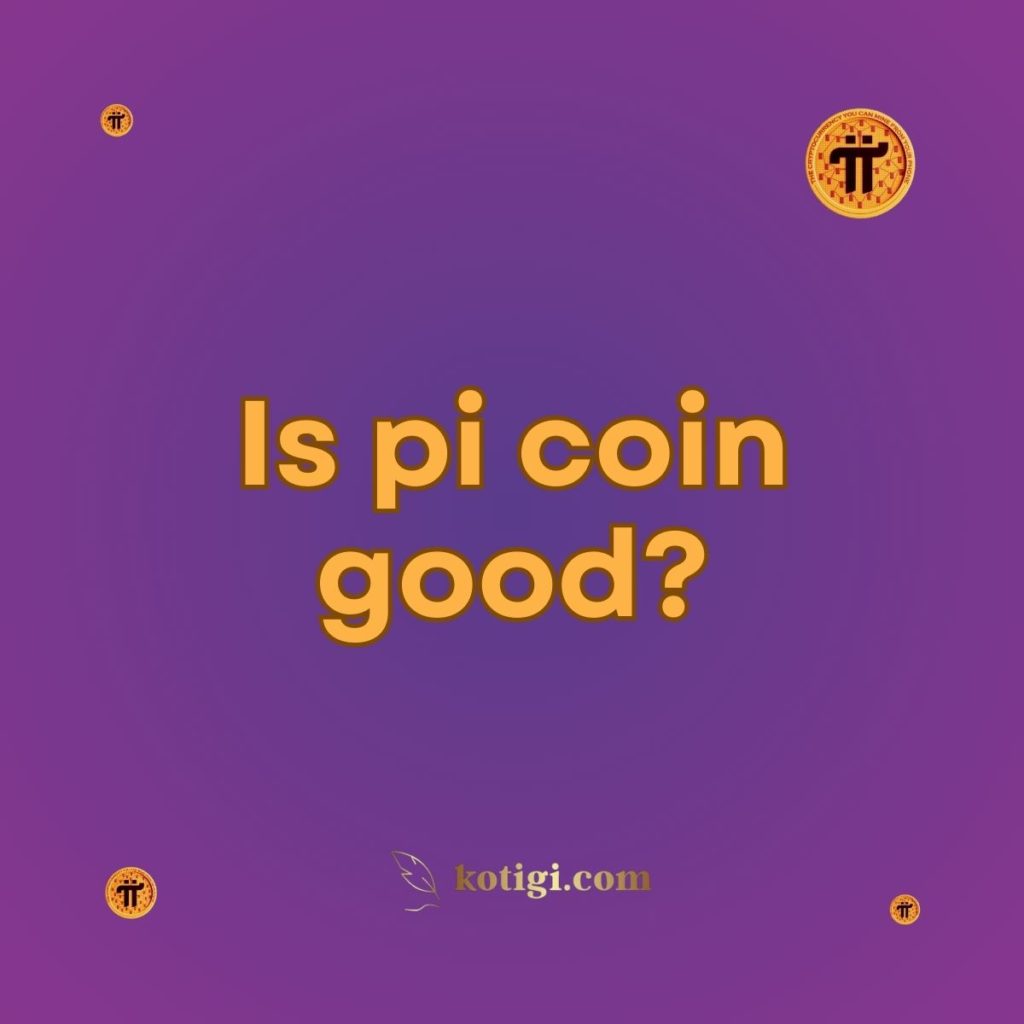
With the growing popularity of Pi Network, many new and seasoned cryptocurrency enthusiasts are curious about Pi Coin and whether it’s a valuable digital asset to invest time in. Pi, a mobile-first cryptocurrency that allows users to mine on their smartphones, has garnered a global user base, but opinions are mixed regarding its future and value. In this post, we’ll explore whether Pi Coin is good by analyzing its unique features, benefits, drawbacks, and potential for long-term success.
What is Pi Coin?
Pi Coin is the native cryptocurrency of Pi Network, a decentralized project aimed at democratizing cryptocurrency mining. Founded by a group of Stanford Ph.D. graduates in 2019, Pi Network allows users to mine Pi on their mobile phones without the need for specialized hardware or high electricity consumption, which is common with other cryptocurrencies like Bitcoin. The project is currently in its Testnet phase, meaning that while users can accumulate Pi coins, they cannot yet trade or withdraw them until the network transitions to its Mainnet phase.
Unique Features of Pi Coin
1. Mobile Mining Accessibility
One of Pi Coin’s most appealing features is that it can be mined on a regular smartphone. Traditional cryptocurrency mining, especially for coins like Bitcoin, requires expensive hardware and consumes large amounts of electricity. Pi, on the other hand, allows users to mine through an app without draining their battery or data. This makes mining more accessible to people who may not have the resources to participate in traditional cryptocurrency mining.
2. No Expensive Equipment Needed
In addition to being mobile-friendly, Pi does not require users to invest in mining rigs or specialized hardware. With just a smartphone and the Pi app, anyone can start mining Pi coins, making it one of the easiest entry points into cryptocurrency mining.
3. Decentralization and Inclusivity
The Pi Network is designed to be inclusive and decentralized, allowing anyone with a smartphone to participate. The goal of the project is to create a more democratic and widely accessible cryptocurrency system. By allowing users to mine Pi without the need for specialized equipment, Pi aims to make cryptocurrency ownership more equitable, unlike Bitcoin and Ethereum, which tend to concentrate wealth in the hands of those who can afford expensive mining hardware.
Why People Think Pi Coin is Good?
1. Low Barrier to Entry
Pi Coin’s mobile-first mining approach has attracted millions of users globally because it doesn’t require any significant investment in equipment or energy. This low barrier to entry has made Pi accessible to users in developing countries and those who may not have the resources to invest in traditional cryptocurrencies.
2. Strong Community Growth
The Pi Network has a growing community of over 45 million users as of 2023. This large user base creates a network effect that can increase the value of Pi as more people join the ecosystem and begin using Pi for transactions. Strong community support is often a sign of a healthy cryptocurrency project, and Pi’s community is both active and engaged.
3. Potential for Real-World Utility
The Pi core team envisions a future where Pi is used for everyday transactions, similar to how Bitcoin and Ethereum are used today. The team has already announced plans for the Pi Mainnet, which would allow users to trade, buy, and sell goods and services using Pi coins. If Pi can establish itself as a legitimate means of exchange, its real-world utility could significantly enhance its value.
Reasons for Skepticism
While Pi has many positives, there are also reasons for skepticism. Like any emerging cryptocurrency project, there are risks and uncertainties that potential users should consider.
1. Lack of Tangible Value (So Far)
Currently, Pi coins cannot be traded or sold, as the project is still in its Testnet phase. While users can mine and accumulate Pi coins, these coins have no market value until the Mainnet is launched. This has led some critics to argue that Pi has no real value yet, and it remains to be seen whether Pi will become a tradable asset with a significant market value.
2. Unclear Path to Mainnet
Pi Network has made significant progress since its launch in 2019, but the timeline for transitioning to the Mainnet remains unclear. Some critics argue that delays in the Mainnet launch have created uncertainty about the project’s future. Until Pi is tradable on major exchanges, its value remains speculative.
3. Comparison to Other Cryptocurrencies
While Pi’s mobile mining approach is innovative, some critics argue that it lacks the proven utility of other major cryptocurrencies like Bitcoin or Ethereum. Bitcoin, for example, has established itself as a store of value, while Ethereum powers decentralized applications (dApps) and smart contracts. Pi, by contrast, is still in the early stages of development, and it remains to be seen whether it can carve out a niche for itself in the crowded cryptocurrency market.
Is Pi Coin a Good Investment?
The Potential for Growth
Pi’s large and growing user base is one of its strongest assets. If Pi can leverage this community to build a thriving ecosystem where users can spend, trade, and invest in Pi coins, it could become a valuable digital currency. The success of Pi will depend on its ability to transition to the Mainnet, get listed on major exchanges, and establish real-world utility.
The Risk of Uncertainty
Like any cryptocurrency, Pi comes with risks, especially since it’s still in its early stages. There’s no guarantee that Pi will achieve widespread adoption or gain significant value once it becomes tradable. As with any investment, potential users should do their research and only invest what they are willing to lose.
Comparing Pi Coin to Other Cryptocurrencies
Pi vs. Bitcoin
Bitcoin and Pi are vastly different in terms of their mining processes, value, and adoption. Bitcoin is mined using specialized hardware in a process that consumes a large amount of energy, while Pi can be mined on a smartphone without draining the battery. However, Bitcoin has a proven track record and is considered a store of value, whereas Pi is still in its infancy, with no tangible value yet.
Pi vs. Ethereum
Ethereum powers decentralized applications and smart contracts, giving it a wide range of use cases beyond just being a digital currency. Pi, on the other hand, is primarily focused on mobile mining and making cryptocurrency accessible to everyone. While Ethereum is well-established and highly valuable, Pi’s future utility remains speculative.
Conclusion
Is Pi coin good? Pi has the potential to become a widely used and valuable cryptocurrency due to its mobile-first approach, low barrier to entry, and growing community. However, its future success depends on a variety of factors, including the launch of the Mainnet, real-world utility, and market demand. While Pi offers exciting possibilities, it’s still in the speculative phase, and users should approach it with caution.
Is pi coin good?
Pi has the potential to become a widely used and valuable cryptocurrency due to its mobile mining, low barrier to entry, and strong community support. However, its value is speculative, as it is still in its Testnet phase and cannot yet be traded.
Key Takeaways
- Pi offers an innovative approach to mining, but it faces competition from well-established cryptocurrencies like Bitcoin and Ethereum.
- Pi coin allows users to mine on mobile phones, making it accessible to everyone.
- Pi is still in its Testnet phase, and its coins cannot yet be traded for real value.
- Pi’s future value depends on the success of its Mainnet launch and whether it gains widespread adoption.
- The low barrier to entry has helped Pi build a large community, but its long-term value remains speculative.





